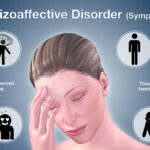Schistosomiasis, also known as bilharzia, is a neglected tropical disease caused by parasitic flatworms of the genus Schistosoma. This chronic condition is endemic in regions with poor water sanitation, particularly in sub-Saharan Africa, parts of Asia, the Middle East, and South America. The disease results from an immune response to the eggs of the parasite lodged in human tissues and can lead to severe health consequences if untreated.

Lifecycle and Transmission of Schistosoma Parasites
The lifecycle of Schistosoma involves two hosts: freshwater snails (intermediate hosts) and humans (definitive hosts). Infection typically occurs through direct skin contact with contaminated freshwater where larval forms (cercariae) are released by infected snails.
Epidemiology and At-Risk Populations
An estimated 250 million people are infected globally, with over 700 million at risk of infection. Key risk factors include:
- Swimming, bathing, or washing in contaminated freshwater
- Occupational exposure (e.g., fishermen, farmers, irrigation workers)
- Lack of access to clean water and proper sanitation
Children are especially vulnerable due to frequent water contact and limited immunity.
Types of Schistosomiasis and Their Causative Species
| Type of Schistosomiasis | Causative Species | Affected Organs |
|---|---|---|
| Intestinal schistosomiasis | S. mansoni, S. japonicum | Intestines, liver |
| Urogenital schistosomiasis | S. haematobium | Bladder, ureters, reproductive organs |
| Other rare forms | S. intercalatum, S. mekongi | Regional-specific infections |
Clinical Manifestations: Stages and Symptoms
Acute Phase (Katayama Fever)
This occurs weeks after infection and may include:
- Fever
- Chills
- Cough
- Myalgia
- Diarrhea
- Eosinophilia
Chronic Schistosomiasis
Chronic infection results from the immune system’s reaction to schistosome eggs trapped in tissues, leading to:
- Intestinal schistosomiasis:
- Abdominal pain
- Bloody diarrhea
- Hepatosplenomegaly
- Portal hypertension
- Urogenital schistosomiasis:
- Hematuria (blood in urine)
- Dysuria (painful urination)
- Bladder wall fibrosis
- Increased risk of bladder cancer
- Infertility or genital lesions in women
Diagnosis of Schistosomiasis
Early diagnosis is essential for preventing long-term damage.
Parasitological Methods
- Microscopic detection of eggs in stool (intestinal form) or urine (urogenital form)
- Best done using Kato-Katz technique (stool) or urine filtration method
Serological and Antigen Tests
- ELISA or rapid diagnostic tests may detect antibodies or antigens
- Used in travelers and low-endemic areas where egg burden is low
Imaging and Endoscopy
- Ultrasound for liver fibrosis
- Cystoscopy in suspected bladder involvement
- CT/MRI for advanced disease
Schistosomiasis Treatment and Management
First-Line Treatment
- Praziquantel is the drug of choice
- Dose: 40–60 mg/kg orally in divided doses
- Effective against adult worms but not immature forms
Treatment Challenges
- Reinfection is common in endemic areas
- Need for mass drug administration (MDA) programs
- No effective vaccine currently available
Adjunctive Management
- Anti-inflammatory therapy for severe immune reactions
- Surgical intervention in cases of advanced fibrosis or obstruction
- Treatment of co-infections (e.g., bacterial urinary tract infections)
Complications of Untreated Schistosomiasis
Untreated schistosomiasis can result in significant morbidity:
- Hepatosplenic disease: Portal hypertension, variceal bleeding
- Chronic kidney damage
- Bladder carcinoma (especially squamous cell type)
- Infertility or ectopic pregnancy
- Neurological complications (rare): Transverse myelitis, seizures
Prevention and Public Health Strategies
Personal Preventive Measures
- Avoid contact with potentially contaminated freshwater
- Use protective clothing or waterproof boots
- Drink only safe and treated water
Community-Level Interventions
- Snail control: Molluscicides or environmental modification
- Improved sanitation: Proper waste disposal, clean water supply
- Health education: Promoting awareness and behavior change
Mass Drug Administration (MDA)
WHO recommends annual or biennial praziquantel distribution in endemic regions, particularly targeting:
- School-aged children
- Adults at risk due to occupation
- Women of reproductive age
Global Efforts and Elimination Targets
The World Health Organization aims to eliminate schistosomiasis as a public health problem by 2030. Integrated strategies include:
- Strengthening health systems
- Expanding MDA coverage
- Encouraging international collaboration for vaccine development
Schistosomiasis remains a significant public health concern in developing regions, driven by environmental and socioeconomic factors. Early detection, targeted treatment, and effective public health interventions are essential in reducing the disease burden. Through sustained efforts, schistosomiasis elimination is an achievable global goal.

